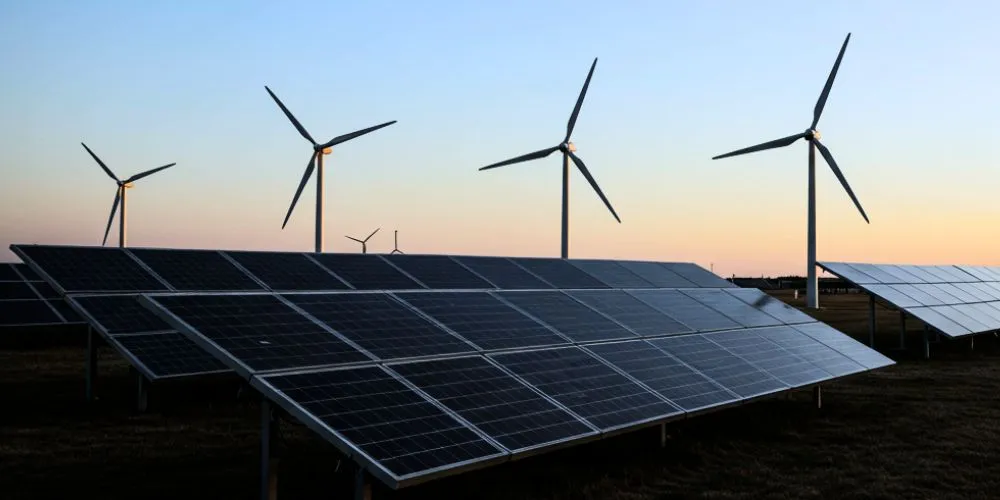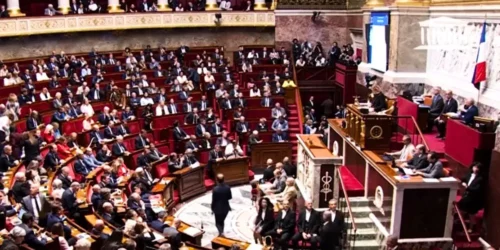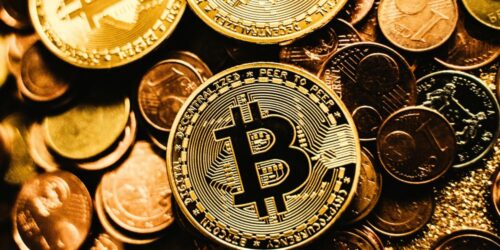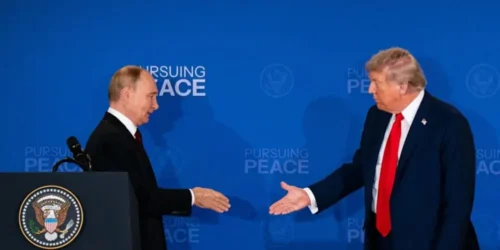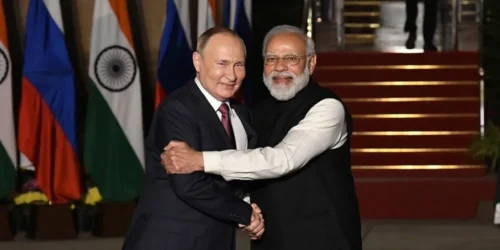For most of its life, renewable energy has been a story told in the future tense. It was a promise, an aspiration, a noble dream. It belonged to the world of tomorrow, a clean, green utopia we might one day reach if we were good enough, rich enough, or scared enough. In the here and now, it was a niche pursuit, the domain of sandal-wearing idealists and government-funded science projects. It was a luxury item, saddled with a “green premium” that made it a non-starter for the hard-nosed, practical world of industry and commerce. The real world, we were told, ran on the dense, dirty, and brutally efficient power of fossil fuels.
The story of renewable energy in the 21st century is not one of gentle, aspirational progress. It is the story of a technological and economic revolution so swift, so powerful, and so disruptive that most people haven’t yet grasped its full implications. This is not a story about environmentalism, though it has profound environmental consequences. This is a story about economics, physics, and the ruthless, unsentimental logic of the market. It’s about how a collection of technologies, once dismissed as expensive and unreliable, became the cheapest and most competitive sources of new energy on the planet.
This is a case study of that revolution. We will not simply list different types of green power. We will dissect the engine of this change, exploring the powerful, interconnected forces that transformed a fringe movement into the central, driving force of the next great industrial age. We will journey to the frontiers of this new world—from deserts blanketed in glass and silicon to vast offshore kingdoms of steel where leviathan turbines harvest the wind.
But this is not a utopian fantasy. We will also confront the immense and uncomfortable challenges this revolution creates. The transition is not clean or simple. It is a messy, chaotic, and often brutal rewiring of our entire civilization, creating new geopolitical tensions, new resource dependencies, and new social fractures. To understand renewable energy is to understand the greatest story of our time: the story of humanity’s high-stakes gamble to reinvent its relationship with the planet, not just as a matter of survival, but as a matter of pure, unadulterated economic opportunity. The sun is coming for the old world, and it is unavoidable.
Part I: The Age of the Green Premium – A Dream Deferred
To understand the ferocity of the current energy revolution, we must first appreciate the long, frustrating decades of its false starts. For nearly half a century, renewable energy was trapped in a seemingly unbreakable cycle of high costs and low expectations. This was the era of the “green premium,” a concept that defined and hobbled the entire movement.
The green premium was the extra price a consumer or company had to pay for choosing the clean option. It wasn’t a small surcharge; it was a chasm. In the 1970s, spurred by the first oil shocks, the dream of solar power flickered to life. But the reality was grim. A single watt of solar-generating capacity costs around $100 in today’s money. Powering an entire home with these early, inefficient panels was a project for wealthy eccentrics and off-grid survivalists, not for the suburban middle class. The technology was a marvel, but the economics were a joke.
Meanwhile, the alternative was effortlessly cheap. A massive, centralized coal or natural gas plant could generate electricity at a scale and cost that solar and wind couldn’t even dream of approaching. The grid was a one-way street, designed to deliver a steady flow of power from these reliable, dispatchable giants. You flipped a switch, and the power was there—cheap, abundant, and predictable.
In this environment, “going green” was an act of personal sacrifice, not economic sense. You chose renewables because you were an idealist, because you wanted to make a statement. The corporate world, bound by the fiduciary duty to maximize profit, saw little reason to make that statement. Why would a factory manager choose to power her facility with expensive, intermittent solar power when she could get cheap, reliable grid power from the local utility?
Renewable energy was relegated to the corporate social responsibility (CSR) report. It was a public relations gesture, a small solar array in the corporate campus parking lot that looked good in the annual report but had no meaningful impact on the company’s actual energy consumption. The core business ran on fossil fuels because the numbers were undeniable.
This created a vicious cycle.
- Low Demand: Due to high costs, demand for solar panels and wind turbines was low, primarily confined to niche markets and government-backed pilot projects.
- No Economies of Scale: Without large-scale demand, manufacturers could never achieve the economies of scale needed to drive down costs. Production remained a small-batch, almost artisanal process.
- High Costs: Without economies of scale, the technology remained stubbornly expensive.
- Stagnant Market: And because costs were high, the market remained stagnant.
For decades, renewable energy was stuck in this loop. It needed a powerful, external force—a catalyst—to break the cycle and unleash the latent power of its technology. In the early 2000s, that catalyst arrived, not as a single event, but as a trio of powerful, interconnected forces that would fundamentally and permanently alter the energy landscape of the world.
The Three-Engine Rocket – The Forces That Ignited the Revolution
The escape from the vicious cycle was not gradual. It was explosive. It was driven by a three-engine rocket of technological learning, strategic policy, and financial awakening that, working in concert, propelled renewables out of their niche and into the mainstream.
The Learning Curve – The Unforgiving Physics of “Getting Cheaper”
The most powerful engine of the renewable revolution is a simple but profound economic principle known as a “learning curve” or “experience curve.” First observed in aircraft manufacturing, it states that for every doubling of a product’s cumulative production, its cost declines by a consistent percentage. The more you build something, the smarter, faster, and cheaper you get at building it. You find better materials, you automate processes, you streamline your supply chain.
For technologies like solar panels and lithium-ion batteries, this is not just a business school theory; it is a physical law. They are technologies, not fuels. A lump of coal is a lump of coal. You can improve your mining skills, but you cannot fundamentally alter the lump itself. A solar panel, however, is a manufactured semiconductor product, much like a microchip. And it follows the same relentless, exponential logic of improvement.
The numbers are difficult to comprehend.
- In 1976, the cost of a solar panel was about $106 per watt (in today’s dollars).
- By 2010, after decades of slow progress, the cost had fallen to around $2 per watt.
- From 2010 to 2020, the cost fell by another 90%, to around $0.20 per watt.
This collapse in price was not an accident. It was the direct result of a massive scaling up of global manufacturing, driven initially by government incentives and then by sheer market competition. As factories in China and elsewhere churned out millions, and then billions, of panels, they raced down the learning curve. They used less silicon, made the wafers thinner, and automated the assembly lines. The same story played out in wind turbines, which grew from modest machines to gargantuan offshore giants with blades the length of a football field, capturing more wind more efficiently with every new generation.
This engine of cost decline is the bedrock of the revolution. It fundamentally changed the economic equation. The “green premium” started to shrink, then it vanished, and then, in an astonishing turn of events, it inverted. In many parts of the world today, building a new solar or wind farm is the cheapest option for new electricity generation, cheaper than building a new plant powered by coal, gas, or even nuclear. The idealist’s choice had become the economist’s choice.
The Policy Accelerator – Creating the Market That Created the Miracle
The learning curve is a powerful engine, but it needs fuel to start. In the early days, that fuel was provided by strategic government policy. It is a common critique that renewables “only work because of subsidies,” but this misses the crucial role policy played in kickstarting the virtuous cycle. Policy created the initial, artificial market that allowed the technology to scale and the learning curve to work its magic.
- Feed-in Tariffs (FiTs): Germany was the key early pioneer. In the 2000s, its government implemented a feed-in tariff that guaranteed anyone who installed solar panels a profitable, long-term price for the electricity they sold back to the grid. This created a massive, nationwide solar boom. German citizens and businesses rushed to install panels, creating a huge, predictable demand that German and, more importantly, emerging Chinese manufacturers raced to fill.
- Tax Credits: In the United States, the Investment Tax Credit (ITC) and Production Tax Credit (PTC) were the primary drivers. These policies allowed developers of solar and wind projects to significantly reduce their tax liability, making the projects financially attractive to private investors and utilities.
- Renewable Portfolio Standards (RPS): Many states and countries implemented mandates requiring that a certain percentage of their electricity come from renewable sources by a certain date. This created a legally binding, long-term demand for clean energy, giving developers the certainty they needed to invest in large-scale projects.
- Strategic Industrial Policy: China declared renewable energy a strategic national priority. The government poured billions into building a domestic manufacturing ecosystem, offering cheap land, low-interest loans, and massive state support to companies like Jinko Solar and Goldwind. This turned China into the undisputed global powerhouse of clean energy manufacturing, and the sheer scale of its production was the single biggest factor in driving down global prices.
Policy was the accelerator pedal. It pushed the industry forward, helping it overcome the initial hurdles of high cost and market uncertainty, until the economic engine of the learning curve was powerful enough to propel itself.
The Wall Street Awakening – Capital Follows the Curve
The third and final engine was the moment when the world of finance woke up and realized that renewable energy was no longer a quirky CSR initiative, but one of the largest and most compelling investment opportunities of the 21st century.
This awakening was driven by two powerful motivators: fear and greed.
- The Fear of Risk: Investors began to see the immense risks inherent in the fossil fuel industry. They worried about “stranded assets”—the risk that a coal mine or an oil field could become worthless in a world moving to decarbonize. They worried about the regulatory risk of future carbon taxes. They worried about the reputational risk of being associated with polluting industries. Climate risk was reframed as investment risk.
- The Greed for Opportunity: As the costs of solar and wind plummeted, the financial models became undeniably attractive. A utility-scale solar farm is an infrastructure investor’s dream. It has a high upfront cost, but once built, its fuel (the sun) is free. It becomes a reliable, long-term cash-generating asset with predictable returns. The risk profile shifted from a speculative technology bet to a boring, stable infrastructure investment.
Trillions of dollars from pension funds, insurance companies, private equity, and sovereign wealth funds began to flood into the sector. The world’s largest investment banks started dedicated green energy financing desks. This torrent of capital further accelerated the cycle, financing the construction of ever-larger projects, which in turn drove more manufacturing scale and pushed costs down even further.
The three-engine rocket—technology, policy, and finance—was now firing on all cylinders. It had propelled renewable energy out of the fringe and placed it at the very center of the global economy.
The Revolution in Practice – Case Studies from the New Energy Frontier
The renewable revolution is not an abstract concept. It is being built, right now, in steel, glass, and concrete at a scale that is difficult to fathom. To understand its scope, we must visit the frontiers where this new world is taking shape.
The Utility-Scale Beast – Taming the Sun in the Desert
For years, solar power was associated with residential rooftops. But the real game-changer is utility-scale solar—vast, sprawling power plants that can generate electricity on the same scale as a traditional fossil fuel plant.
Consider the Noor Abu Dhabi solar park in the United Arab Emirates, a nation whose wealth was built on oil. Spread across 8 square kilometers of desert, 3.2 million solar panels work in silent concert. At its peak, it generates 1.2 gigawatts of electricity, enough to power nearly 100,000 homes.
The project is a marvel of logistics and engineering. But its most revolutionary feature is its price. The winning bid to build this plant came in at a staggering low of 2.42 cents per kilowatt-hour, one of the cheapest rates for electricity ever recorded on Earth. It was a clear, unambiguous signal that, in places with abundant sunshine, solar power was not just competitive with fossil fuels; it was dramatically cheaper.
Projects like Noor are rewriting the energy maps of entire regions. They offer countries in the “Sun Belt” a path to energy independence, freeing them from the volatile geopolitics of oil and gas markets. They are turning what was once considered a barren wasteland—the desert—into one of the most valuable economic assets on the planet. The utility-scale beast is not just a power plant; it is a geopolitical force.
The Unseen Partner – The Battery That Makes the Sun Shine at Night
The oldest and most legitimate criticism of solar and wind power is intermittency. The sun sets, and the wind dies down. How do you power a modern society when your primary energy sources are not always available? For years, this was the Achilles’ heel of the renewable dream.
The answer is energy storage, and its champion is the lithium-ion battery. The same learning curve that crashed the price of solar panels is now working its magic on batteries. Driven by the explosive growth of the electric vehicle market, the cost of lithium-ion batteries has fallen by nearly 90% in the past decade.
This has unlocked a new frontier: grid-scale battery storage. Consider the Moss Landing Energy Storage Facility in California. Housed in a former natural gas plant turbine hall, it is one of the largest battery installations in the world. It is a house-sized collection of thousands of interconnected battery modules that can store and discharge hundreds of megawatts of power.
Its function is simple but revolutionary. During the middle of the day, when California’s solar farms are generating a massive surplus of cheap electricity, the Moss Landing facility acts like a giant sponge, soaking up that excess power. In the evening, as the sun sets and people come home from work, turning on their lights and appliances, demand spikes. The battery then acts like a giant power pack, discharging its stored solar energy back onto the grid, ensuring a smooth, reliable supply of electricity.
The battery is the unseen partner that makes intermittent renewables reliable. It transforms solar and wind from volatile, unpredictable sources into dispatchable, 24/7 assets. The combination of cheap renewables and cheap storage is the one-two punch that represents a true existential threat to the traditional fossil fuel power plant model.
The Offshore Leviathan – Harvesting the Power of the Sea Wind
While solar dominates the sunny parts of the world, wind power is the champion of regions with strong, consistent sea breezes. And nowhere is this more apparent than in the blustery waters of the North Sea.
The Hornsea 2 project, off the coast of the United Kingdom, is a testament to the staggering scale of modern wind technology. It is the largest operational offshore wind farm in the world. It consists of 165 massive turbines, each one standing taller than the Great Pyramid of Giza. The blades on a single turbine are over 80 meters long. As they spin, they sweep an area larger than the London Eye.
Building such a project is an engineering feat on par with building an oil rig. It requires specialized vessels the size of aircraft carriers to transport and install the massive components in a harsh and unforgiving marine environment. Yet, despite this complexity, the cost of offshore wind has also plummeted, falling by more than 60% in the past decade.
Hornsea 2 alone can power over 1.4 million UK homes. It is a clean power station floating in the sea, harvesting a powerful and inexhaustible resource. Projects like this are turning countries like the UK, which once powered its empire with coal, into “the Saudi Arabia of wind,” creating energy security and a massive new high-tech industry.
The Friction – The Uncomfortable Realities of the Green Transition
The revolution is here, and it is powerful. But it is not frictionless. The transition from a fossil-fuel-based economy to a renewable one is a monumental undertaking, and it is creating a new set of profound and difficult challenges. To ignore them is to be naive about the true nature of the task ahead.
The Material Choke Point: The New Geopolitics of Green Metals
The old world ran on oil, and its geopolitics were defined by who controlled the oil fields of the Middle East. The new world runs on electricity, and its geopolitics will be defined by who controls the mines and processing facilities for a new set of critical materials.
A wind turbine requires tons of copper and rare earth elements for its magnets. An electric vehicle battery requires lithium, cobalt, nickel, and manganese. Solar panels require high-purity silicon. We are not ending our dependence on extracted resources; we are shifting it.
This creates new and dangerous geopolitical chokepoints.
- China currently refines over 60% of the world’s lithium and over 80% of its cobalt, and it has a near-monopoly on the processing of rare earth elements. This gives Beijing immense strategic leverage over the global green transition.
- The Democratic Republic of Congo produces over 70% of the world’s cobalt, often under horrific labor and environmental conditions.
- The “Lithium Triangle” in South America (Chile, Argentina, Bolivia) holds over half of the world’s known lithium reserves.
The race to secure these new supply chains is the great geopolitical game of the 21st century. It is driving a new era of resource nationalism, competition between the U.S. and China, and a frantic search for both new mines and new recycling technologies (like the “urban mining” of old batteries) to reduce these dependencies.
The Grid Dilemma: Rewiring a Century-Old System
The existing electricity grid is one of the engineering marvels of the 20th century. It was also designed for a completely different world. It was built around a few large, centralized power plants that produced a predictable flow of power.
The renewable world is the opposite. It is decentralized, with millions of power sources (from rooftop solar to massive wind farms) scattered across the landscape. And it is intermittent. Integrating this new world onto the old grid is a colossal challenge. It requires a multi-trillion-dollar rewiring of our entire system. This includes:
- Building New Transmission: We need thousands of miles of new high-voltage transmission lines to carry wind power from the gusty plains of the Midwest to the cities on the coasts, and to carry solar power from the sunny deserts of the Southwest to the rest of the country. Building these lines is a slow, expensive process, often bogged down in legal challenges from landowners.
- Managing the “Duck Curve”: In places like California, with a lot of solar, a phenomenon called the “duck curve” occurs. In the middle of the day, solar power floods the grid. As the sun sets, that power vanishes, and demand spikes. This creates a massive ramp-up challenge for the grid operator. It can only be solved with vast amounts of energy storage and “smart grid” technologies that can flexibly manage demand.
The Human Cost: The Challenge of a Just Transition
Every industrial revolution creates winners and losers. The transition to renewable energy, for all its benefits, threatens the livelihoods of millions of people whose communities have been built around the fossil fuel economy for generations. A coal miner in West Virginia, a gas field worker in Texas, or a power plant operator in Ohio cannot simply become a solar panel installer overnight.
Ensuring a “just transition” is not just a moral imperative; it is a political necessity. Without a clear and well-funded plan to support these workers and communities through retraining programs, economic development funds, and robust social safety nets, the green transition will create deep social resentment. This resentment can easily be exploited by politicians, creating a powerful backlash that could slow or even halt the progress that is so desperately needed. The human cost of this transition is real, and it cannot be ignored.
Conclusion: The Cathedral Builders
The story of renewable energy is the story of an idea whose time has come. It is no longer a question of whether the world will transition to a clean energy system, but how and how fast. The economic and technological engines driving this change are now too powerful to be stopped. The brutal, beautiful logic of the learning curve has made it so. The sun and the wind are now the cheapest and most abundant fuels on the planet.
This is humanity’s next great industrial project, a task of civilizational scale. We are in the early, messy, and exhilarating stages of building a new energy world. The challenges are monumental. We must navigate a treacherous new geopolitical landscape of critical minerals. We must undertake the colossal engineering task of rewiring our continents. And we must do so in a way that is fair and just to all our people.
The builders of the great medieval cathedrals began their work knowing that they would not live to see it finished. They laid the foundations and raised the first spires, trusting that their children and their children’s children would continue the task. They were driven by a vision of something magnificent, something that would stand for centuries.
We are the cathedral builders of the 21st century. We are laying the foundations of a global energy system that can power our world for generations to come, a system that is resilient, sustainable, and democratic. The work is hard. The path is uncertain. But for the first time in human history, the tools are in our hands, the economics are on our side, and the once-distant dream of a world powered by the unavoidable sun is finally, tangibly, within our reach.

